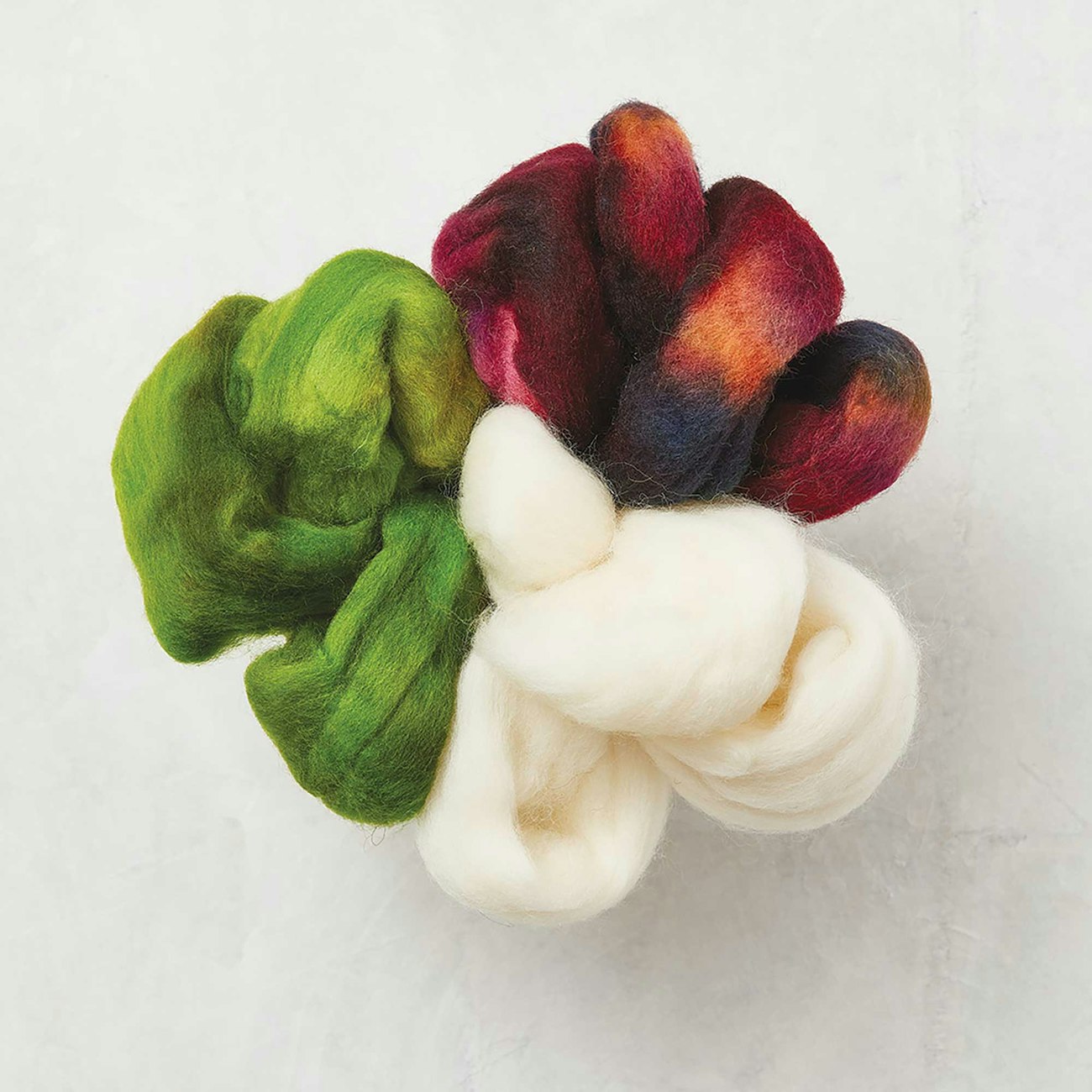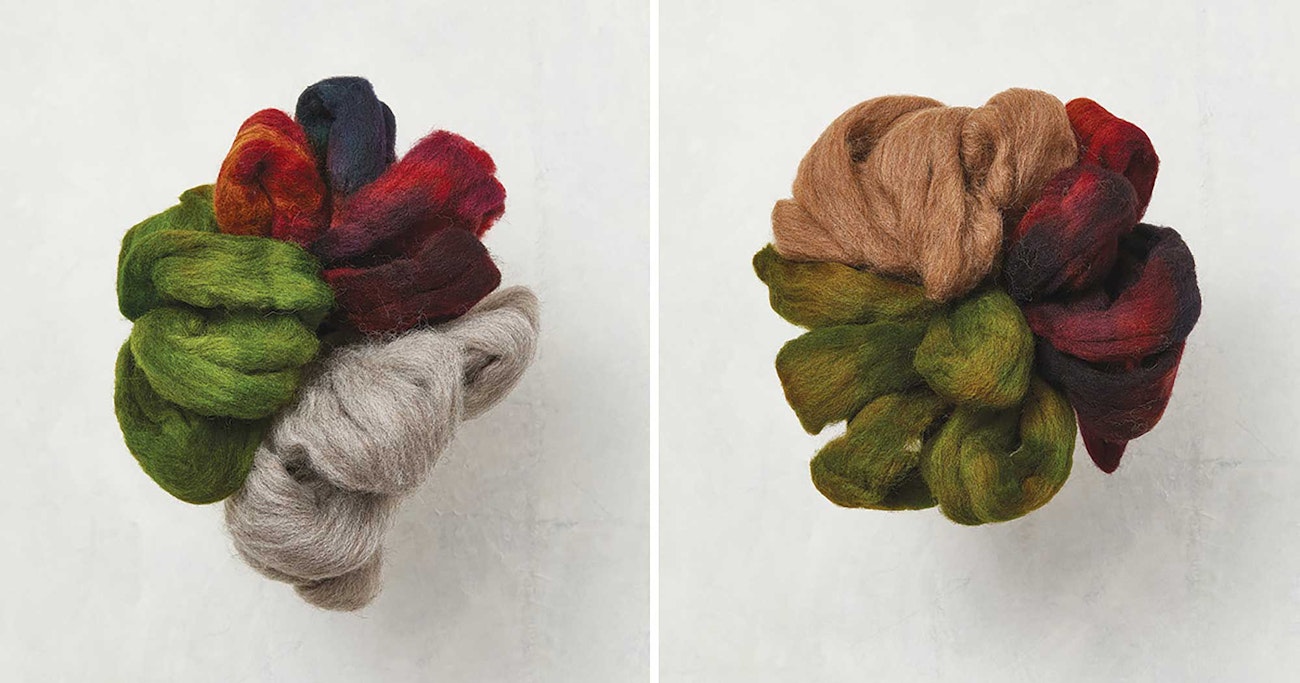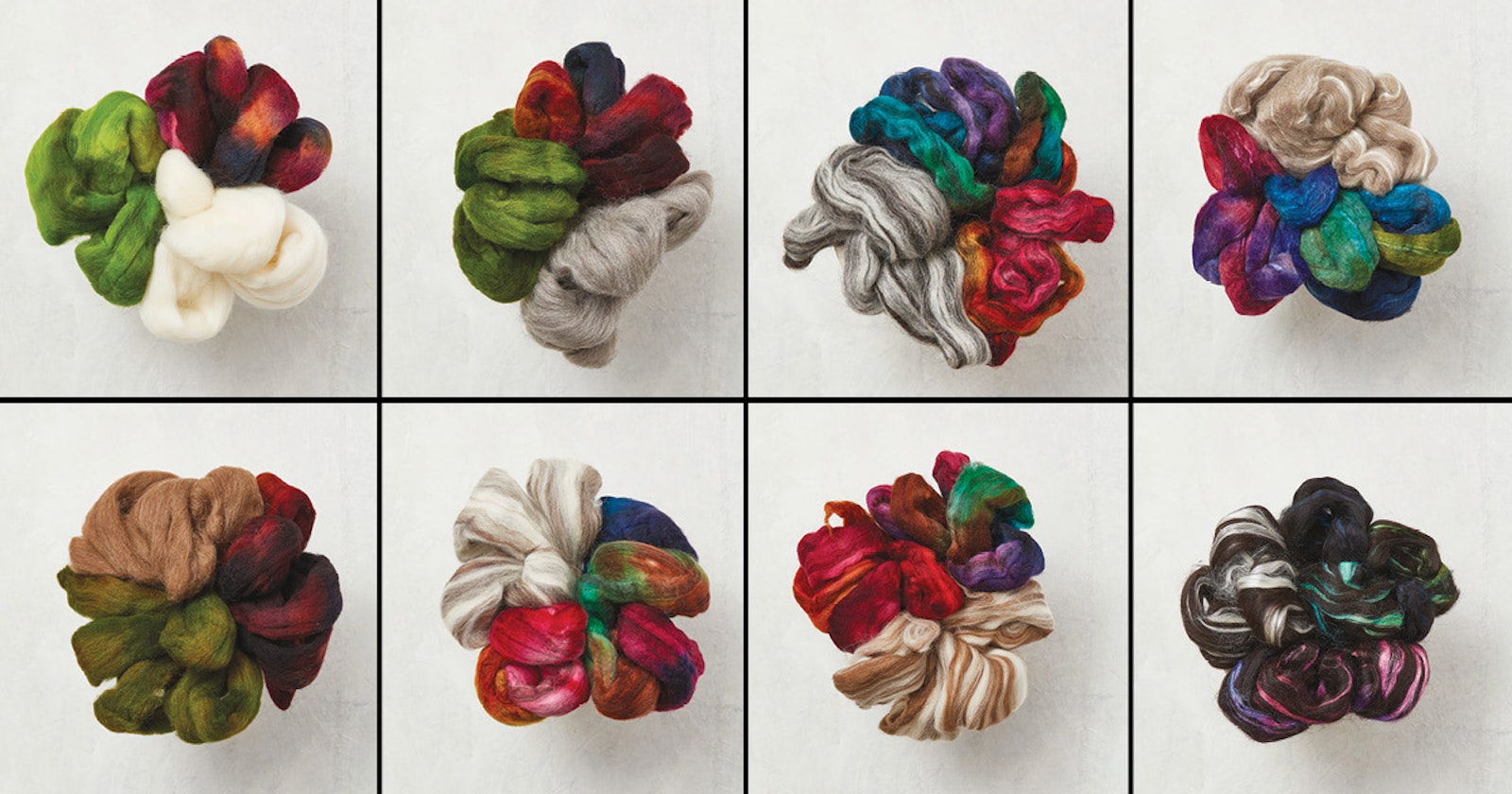While for some, adding dye over another color means dye over dye, as Kate Sitzman of Woolgatherings explains in Summer 2018 Spin Off, it can also mean layering dye over natural-colored fibers. Check out her article to see her experiments using Shetland and a variety of blends!
Fibers in natural colors such as gray, black, or brown are often overlooked by dyers, but they can be a wonderful way to achieve a saturated, earthy look with less effort and using fairly standard dye colors. They can also be a shortcut to getting a simple tonal palette, either by putting multiple natural colors of the same base fiber in a dyebath together or by using natural-colored fiber blends.
Some of the beauty of natural-colored fibers is that they are never truly solid colors. Although they are sorted and blended for a certain amount of uniformity, the colors will always have a degree of variation, even if they come from the wool of a single sheep. When overdyed, these blended colors each take the dye just a little bit differently, which gives the finished product its depth and variation. The natural colors create soft tones and tend to have a rich, heathered look that ultimately creates an interesting yarn.
Natural Colors
White and ecru base fibers are dyers’ staples for good reason. The lighter and more neutral the base, the more control the dyer has over the outcome and the more colors the dyer can achieve. Lately, however, I have been enjoying the results of letting the fiber speak for itself a bit more, letting the natural colors blend and contrast with the dye colors with compelling (and sometimes unexpected) results.
Although I’ve been dyeing natural-colored fibers for years, I rarely have occasion to dye multiple base colors of fiber together in a single dyelot. I thought it would make an interesting color study to dye a few different colors of the same fiber type together to see the nuances side by side.
For the first batch, I chose a gray and a moorit brown, plus a white sample to show what the pure dye color would look like. I didn’t use black because I felt it would be too dark to produce a meaningful result. I chose Shetland wool because it is available in many colors and I wanted to keep the fiber base consistent across the dyelot. Icelandic would also have worked well because it is readily available in a wide color range. I tried two different dye styles: a multicolor stripe (which is my usual method of dyeing) and a more free-form semisolid mix of emerald and olive greens using a mix of two commercial acid dyes (Sabraset and WashFast).
 White and ecru base fibers are dyers’ staples for good reason. The lighter and more neutral the base, the more control the dyer has over the outcome.
White and ecru base fibers are dyers’ staples for good reason. The lighter and more neutral the base, the more control the dyer has over the outcome.
The results were somewhat as expected in that the colors were dramatically brighter on the white fiber than on the gray or brown, but the overdyed gray and brown resembled each other more than I expected. The difference between overdyed gray and brown can be quite subtle, especially when the dye color or the base fiber color is darker. A natural black or very dark brown may carry only a slight hint of the overdye, while a light color such as silver or camel may seem almost indistinguishable from dyed white fiber.
Essentially, the brown fiber produces warmer tones and the gray results in cooler tones, and some dye colors will showcase these effects more than others. Naturally, you can use this to your advantage when planning a project. If you plan to work in a particular palette, you can choose the base color that will best enhance it. A brown fiber will add warmth to reds and oranges, while a gray fiber can deepen blues without muddying them.
 Gray (left) and brown (right) Shetland tops dyed in the same lots as the white sample above.
Gray (left) and brown (right) Shetland tops dyed in the same lots as the white sample above.
Predicting your results requires a bit of “mental mixing”—factoring in the base color as if it were another layer of dye and using a bit of color theory to imagine how the colors will play together. This need not be an intimidating prospect, however, as there really isn’t a wrong choice, only differences in outcome.
Further resources:
- Overdyeing with Natural Dyes Video Download
- Overdyeing with Dagmar Klos Streaming Video
Kate Sitzman is the owner and dyer at Woolgatherings. She lives in Duvall, Washington, and when she’s not working in her dye studio, she can be found hiking and snowboarding in the Cascade Mountains. You can find her handpainted and undyed fibers at www.woolgatherings.com.
Originally published August 29, 2018; updated July 31, 2023.

